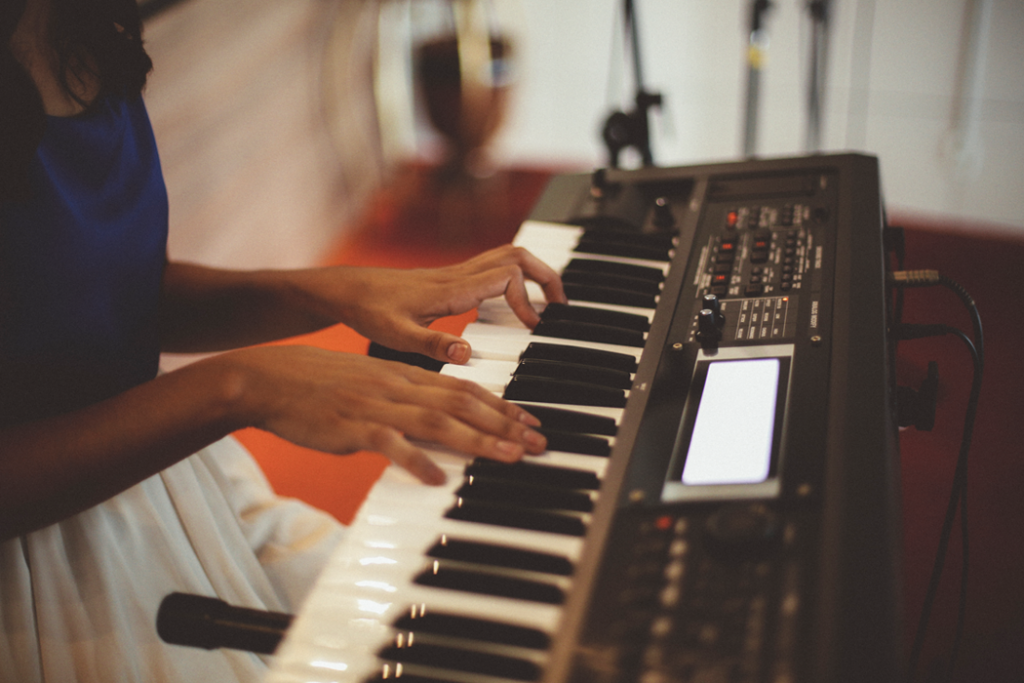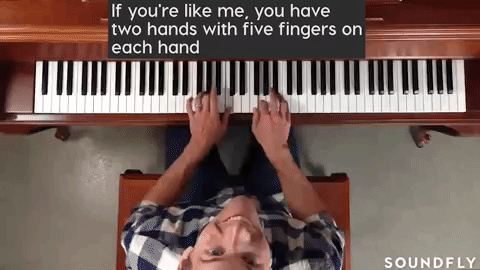+ Take your modern jazz piano and hip-hop beat making to new heights with Soundfly’s new course, Elijah Fox: Impressionist Piano & Production!
Hanon exercises are the source of much debate in the keyboard community. Some teachers love them, and others think they’re useless. Students seem to universally dislike them, at least when they are starting out. It’s not hard to see why; they’re repetitive, they don’t sound cool, and it can be hard to see the practical application. But I believe (and have experienced!) that if you use and adapt Hanon exercises to suit your goals, you will find them incredibly useful.
I play keyboard professionally, but exclusively in a pop setting. I don’t play classical, and I rarely play jazz. Pop, country, rock, and blues are my bag. It may seem weird that I practice Hanon, a traditional classical exercise, but let me explain. Here are a few reasons I practice Hanon every day and some ways you can use Hanon to enrich your practice.
By the way, Hanon Online has 240 exercises available for free. No excuses, y’all.
Hanon Exercises Make Easy-to-Remember Warmups
Many musicians (not just keyboard players) neglect to warm up before they play. Even three minutes can make a big difference — just get your fingers moving and your brain into a good headspace.
Once you start practicing Hanon, you’ll quickly memorize the first couple exercises. Use these as quick warmups before a gig! You can even turn the volume down (if you’re using a digital keyboard) and run through them.
Use Hanon to Practice Mindful Playing
People who argue against practicing Hanon exercises complain that they become mindless after a few runs through the exercises. To me, that’s a problem with the player, not the exercise.
When an exercise becomes mindless, it becomes useless. Being mindful when you’re playing and practicing is an important skill to develop. It will make your practicing more efficient and your playing more natural.
I’ll explain how I use Hanon to improve my everyday keyboard playing, but I stress that all of this would be useless if I wasn’t practicing mindfully.
Use Hanon to Gain Control of Your Fingers
When I’m hired as a keyboard player, I’m primarily playing chords and simple leads lines. Occasionally I have a keyboard solo. It’s very rare that I’m playing music that requires difficult runs or very technically challenging parts.
One day, I went back to some old classical pieces that I was once able to play. I realized quickly that I had lost a lot of dexterity and accuracy that I once practiced daily.
Working through Hanon exercises with great attention to detail and accuracy will improve your dexterity and control, no question.
Here’s how I do it:
- Start your metronome. Always practice Hanon with a metronome. Otherwise, it’s a waste of time.
- Start at an unnaturally slow pace. So slow that it’s difficult to play with the metronome.
- Move up until you’re working your fingers hard. When you slip up, restart.
- When you feel completely comfortable with one exercise, move on to the next one.
By practicing Hanon exercises with attention to detail and at differing tempos, you will build your accuracy quickly. I noticed a difference in literally days.
+ Learn more on Soundfly: New to piano? Check out our two introductory piano courses designed to get you started on the right foot, Building Blocks of Piano and Music Theory for Beginner Pianists.
Practice the Exercises in Every Key
Hanon detractors often argue that because the exercises are only in C, it makes them less applicable to real-life situations. This is true. You are limiting yourself if you choose to play these exercises in C and only C. But why would you do that?
Hanon exercises are just patterns. You can take a pattern in C and put it in F#. Put it in D. Put it in A. Apparently, in the Russian conservatory, they make students practice Hanon in every key.
Practicing Hanon in every key will put those keys under your fingers. Have you ever tried to improvise in a key you’re unfamiliar with? It’s a lot harder than, say, C. Working your fingers around every key nearly every single day will help.
Hanon Exercises as Time-Building Practice
A big part of my daily practice is time-building, working on keeping excellent time and working on my feel and groove.
Believe it or not, Hanon exercises can help you with this. For one thing, working through Hanon carefully with a metronome is great for your time. This is especially effective if you do the exercises at very low tempos.
You can also work your subdivisions (and thus your time and groove) with these exercises. Hanon exercises are all running eighth notes, but just like you can transpose these patterns, you can change the rhythm.

Try working through Hanon like this:
- Start the exercise with quarter notes, bpm at around 50.
- Once you’ve gone through the exercise, do it again with eighth notes.
- And again, with triplets.
- Next, sixteenth notes.
- Now try fitting five notes into a beat.
You can see how this can give your subdivisions a workout! Try doing them one after another without stopping. Also, try going from quarter notes straight to groupings of five. This is useful stuff — being able to pull off a lick in five in the middle of a solo is pretty hip.
Hanon Exercises Are as Useful as You Make Them
As you can see, I don’t use Hanon as a mindless practice tool. I use Hanon exercises as a place to start when I want to work technique.
It’s also not the only technique I practice. I still do scales every day, I still practice montunos and finger independence exercises. But I also do Hanon every day and I find it incredibly useful.
You don’t need to stick to the book with these exercises. Have fun with it, innovate, and get creative!
Play Your Heart Out!
Continue your learning adventure on Soundfly with modern, creative courses on songwriting, mixing, production, composing, synths, beats, and more by artists like Kiefer, Kimbra, Com Truise, Jlin, Ryan Lott, RJD2, and our newly launched Elijah Fox: Impressionist Piano & Production.
—
Dave Marcello is Director of Marketing for ReverbNation, where over four million artists have jump-started their careers with wider exposure, better feedback, and deeper industry access. He’s also a kinda-crappy-but-still-trying skater and surfer.






